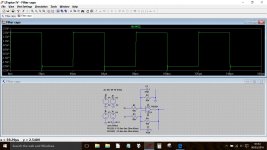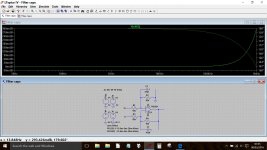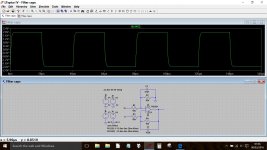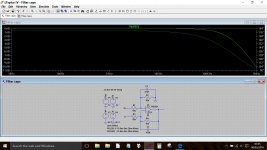Even RS seem a bit cheaper for the polystyrenes. £12 for ten.
| RS Pro 47pF 2.5% 160 V dc Axial Through Hole Polystyrene Film Capacitor 4mm |
| RS Pro 47pF 2.5% 160 V dc Axial Through Hole Polystyrene Film Capacitor 4mm |
One other thought occurred to me on this subject, are these caps actually in the signal line? They are in parallel with the resistors which are definitely affecting the signal but it could be argued that they don't do anything until frequencies are reached that are far above hearing, and that since they are only reducing these unwanted ultra-high signals then their linearity etc isn't of any concern? Maybe someone could enlighten me?
Most definitely classed as in the signal line 🙂 They don't come any more mission critical than applications like this. Although the caps tame the really high frequency oscillation, they also start to have an effect much lower down. If you looked at a squarewave response of the stage you would see just how much of an effect they actually have in the audio band.
Thanks Mooly, I have a scope (and I know how to use it) so can look at squarewave response, can you suggest appropriate frequencies and what to look for? I will buy some of the caps you suggested, it will be interesting to see the difference for myself.
Most definitely classed as in the signal line 🙂 They don't come any more mission critical than applications like this. Although the caps tame the really high frequency oscillation, they also start to have an effect much lower down. If you looked at a squarewave response of the stage you would see just how much of an effect they actually have in the audio band.
I'll guarantee you won't see any difference on a scope between the different caps (apart from differences due to tolerance). What you will see is how the addition of the caps affects the high frequency response of the circuits causing an increase in the rise and fall times. In other words the squarewave will be more rounded.
Yes, I agree, I am very familiar with the fact that squarewaves are sines with added odd harmonics.
I'll guarantee you won't see any difference on a scope between the different caps (apart from differences due to tolerance). What you will see is how the addition of the caps affects the high frequency response of the circuits causing an increase in the rise and fall times. In other words the squarewave will be more rounded.
Thanks a lot for doing this Mooly, pictures tell a much better story.
This is what you will see using 47pf caps. Frequency here was 25kHz. Also look at the response of the circuit with and without. The opamp here is not unlike the OPA2604.
View attachment 536164
View attachment 536165
View attachment 536166
View attachment 536167
Now as to the question of "why?", the answer should be "input capacitance", of which JFET input opamps happen to have a good bit. Imagine about 2-6 pF to V+ or V- on each input, which is essentially the same as ground. In a standard noninverting amplifier circuit, one of these is pretty much in parallel to the gain-setting resistor Rg. So your closed-loop gain wants to increase at high freqs, which it does until it hits the decrease given by finite GBW. Result, a nice big resonance peak in frequency response, with the associated ringing you see in time domain - then it only takes some unlucky feedback for oscillation to start.
As the problem is capacitive in nature, it'll become more apparent with higher-value resistors. Higher supply voltages, by contrast, would reduce it, as the junction in a JFET behaves like a varactor diode, IOW parasitic capacitance goes down as voltage increases, potentially quite dramatically so. (Cib/Cgs and Cob/Cgd graphs are usually given in FET datasheets, but a factor of 3 would not be unexpected.) So don't be surprised if some JFET input opamps are especially finicky at low supplies. OPAx604 actually seem to like higher-than-usual supplies in general.
In applications requiring more than just audio bandwidth, you obviously wouldn't just slap 47p on there and be done with it but rather choose a value that just about eliminates the peaking while not yet limiting bandwidth too much. Nominally Cin * Rg/Rf or thereabouts.
As the problem is capacitive in nature, it'll become more apparent with higher-value resistors. Higher supply voltages, by contrast, would reduce it, as the junction in a JFET behaves like a varactor diode, IOW parasitic capacitance goes down as voltage increases, potentially quite dramatically so. (Cib/Cgs and Cob/Cgd graphs are usually given in FET datasheets, but a factor of 3 would not be unexpected.) So don't be surprised if some JFET input opamps are especially finicky at low supplies. OPAx604 actually seem to like higher-than-usual supplies in general.
In applications requiring more than just audio bandwidth, you obviously wouldn't just slap 47p on there and be done with it but rather choose a value that just about eliminates the peaking while not yet limiting bandwidth too much. Nominally Cin * Rg/Rf or thereabouts.
- Status
- Not open for further replies.
- Home
- Source & Line
- Analog Line Level
- OPA2604 - oscillation problem



